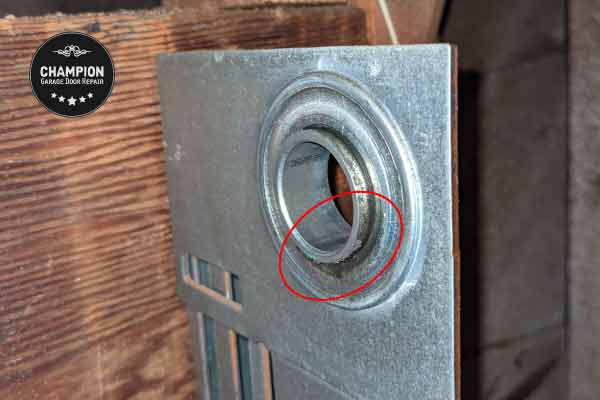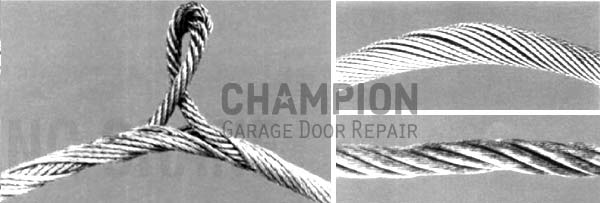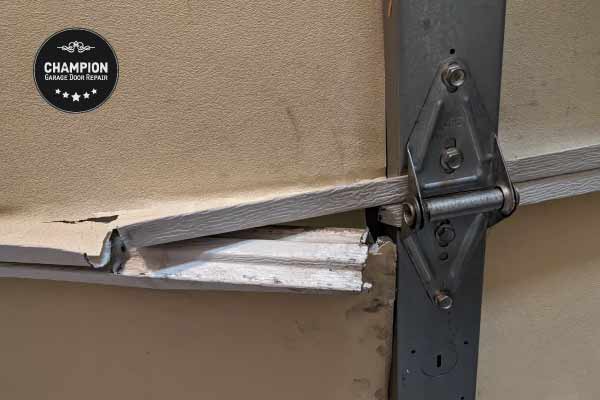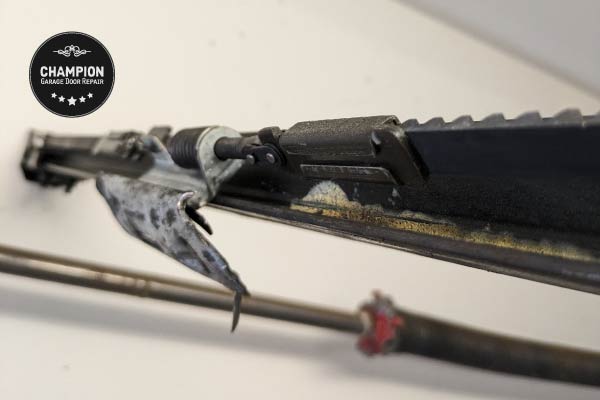After a long period of use, garage doors can be affected by factors such as friction, contamination, vibration, and overloading, which can lead to potential failures. This post will help you identify common signs of wear and proactively repair your garage door to ensure it continues to operate safely and smoothly.
1. Residue in the End Plate Area
Black powder and metal shavings may accumulate in the end bearing plate area due to worn bearings or misalignment of the torsion assembly. The movement and friction between the torsion tube and end bearing can grind and weaken the metal parts, leading to deformation or breakage.

This issue can cause the garage door cable to repeatedly come off the pulley, and in extreme cases, the garage door torsion tube to shear off.
2. Worn Door Cables
The garage door cables contain several wire strands. When a wire strand wears out or bends, each of the cable’s strands adjusts to accommodate the difference in weight and supports a greater load. This increases the chances of the strands breaking due to overloading.

The door cables can wear out and break due to various factors, including fatigue and repeated bending, prolonged exposure to heat and moisture, a sudden release of tension, overloading, friction, and improper installation.
3. Cracked Garage Door Sections
Cracks in garage door sections can originate from various sources, including fatigue, stress, poor manufacturing, corrosion, and natural events such as earthquakes, floods, storms, and high winds. Initially, cracks may be microscopic, but if the steel lacks sufficient toughness or thickness, they will gradually grow over time.

Large cracks can lead to structural failure of the garage door, causing sections to buckle under the weight and potentially causing the door to come off the tracks and collapse. If the issue is detected early enough, the garage door sections can be repaired by reinforcing them with steel struts.
4. Residue on the Garage Floor
Accumulation of black powder and metal shavings on the garage floor or on the outer side of the garage door is usually caused by the opener’s trolley grinding on the opener’s rail. Increased friction when the garage door opens and closes weakens the trolley until it breaks and can also stain the garage door floor or damage the garage door’s finish or paint with residue.

The issue can be repaired in the early stages by lubricating the opener’s rail and making adjustments such as aligning system components and balancing the door.
A proper inspection and maintenance can help you catch issues early on, avoid costly repairs, and improve the overall performance and safety of your garage door. Inspections and keeping written records can also help you determine the rate at which your garage door is wearing out and proactively replace worn parts before they fail. Consult a licensed garage door repair company if necessary.







